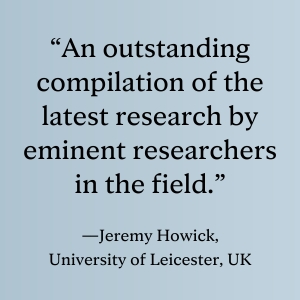
**Investigating the Unconscious: A Review of John Bargh’s ‘Before You Know It’**
John Bargh, a distinguished name in social psychology, offers an intriguing examination of the unconscious factors influencing human actions in his work, “Before You Know It: The Unconscious Reasons We Do What We Do.” Renowned for his inventive and perceptive experiments, Bargh explores the nuances that inform our everyday behaviors, choices, and views, frequently beyond our conscious recognition.
Bargh’s contributions have consistently captured the attention of the psychology field, albeit not without controversy. Detractors, particularly amid the replication crisis, have questioned the reliability of certain findings attributed to him, particularly concerning social priming. Nevertheless, Bargh continues to be a compelling navigator in comprehending the unconscious mind. His book features experiments like the “elderly” priming study, demonstrating how minor cues can greatly impact actions such as walking speed. Another illustration is the influence of drink temperature on perceptions of warmth in a stranger. These investigations, despite being contentious, emphasize his perspective that our social settings are intricately connected to cognitive and evolutionary psychology.
Bargh depicts social psychology as an essential element of a comprehensive interdisciplinary integration, drawing from influential figures such as Skinner, Freud, and Darwin. This methodology highlights the richness and intricacy of his theoretical framework. However, Bargh’s tendency to classify almost all unexamined influences on behavior as “unconscious” has faced scrutiny as being excessively broad, risking the dilution of the term’s relevance.
Importantly, Bargh’s storytelling approach is captivating, frequently weaving personal anecdotes along with his passion for music and travel into scientific discussions. Yet, for some readers, the book may fall short in its critical exploration of alternative explanations and deeper scrutiny of the implications of the experiments. The theoretical concepts introduced are fascinating but occasionally lack thorough validation through rigorous debate or illustration of practical applications.
Despite these critiques, Bargh’s charisma is evident in his writing. His personal narratives, though offered briefly, infuse a relatable dimension into the text. As a pioneer in his area, additional insights into his life and approaches could have enhanced the narrative, providing a more fulfilling view into the psyche of a leading psychologist.
In conclusion, “Before You Know It” presents an enthralling journey into the hidden motivators of human conduct. Although the book’s ambitious aims are not consistently met, Bargh’s engaging prose and lasting contributions to social psychology render it a valuable read for those fascinated by the intricacies of the unconscious mind.